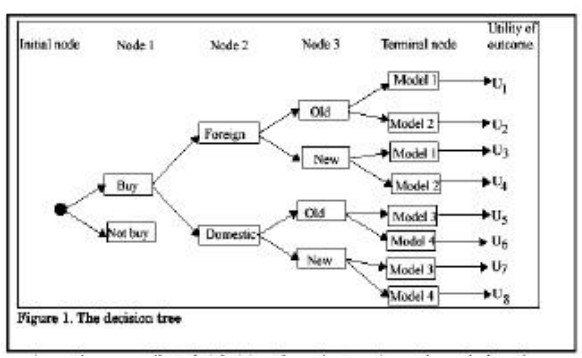It can be argued that when consumers buy a durable good, they are purchasing the flow of services the goods provide (transportation, refrigeration). The model developed earlier can be adapted to this situation by linking the consumption with the flow of services. If prices fall, consumers will consume more of these services per period. It has become common practice to lease cars, which is basically purchasing the services without buying the product. A reduction of lease prices would encourage, according to our theory, drivers to lease more cars and more expensive cars.
Still, many consumer durables are purchased outright and the fortunes of the companies that produce these goods depend on the purchase decisions made by their customers (as automobile companies often find to their sorrow). Therefore, it is desirable to have a model that permits us to examine the decision to purchase durable goods like cars or houses. The decision tree assumes that, instead of considering all of the choices in a consumption possibility set at once, the consumer first considers a few broad categories and then narrows to sub- categories until a final decision is made on a product.
For example, consider a consumer making a decision to purchase a car. She must first decide whether she should make the purchase now or not; the first decision point where she makes the decision is represented by the black dot in Figure 1, and is called the initial node, and the two choices she has at this point are represented by the two branches emanating from it. If the decision is to buy a car, she moves along the upper branch, and reaches another node where she must now decide whether to purchase a foreign or a domestic car. At the next node she chooses between a new or used car. Finally, at the terminal node, she makes a decision on the model.

In this case, where the consumer has perfect information about all the choices available at various nodes, can recollect what decisions she made at previous nodes, and where the number of nodes is limited (mathematically speaking, finite), we can apply simple induction to decide on the best choice. If she makes a decision at the second node to go for a foreign car, then the possible utilities she can achieve are one of the four numbers, U1 to U4.

